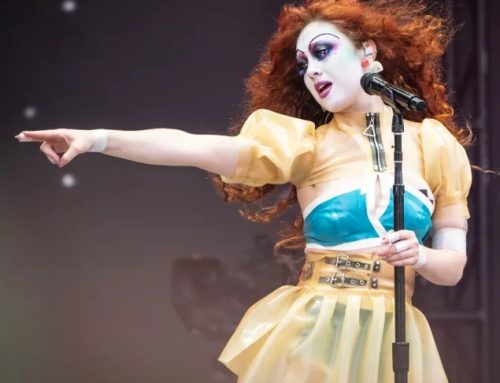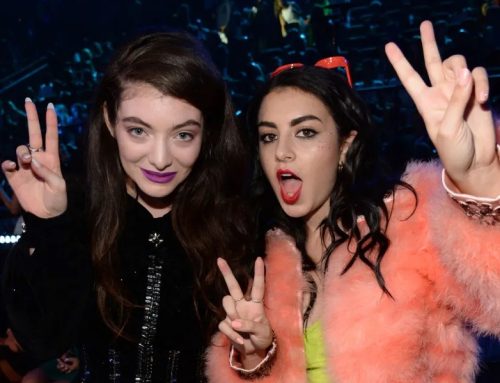In 1994, Madonna journeyed to Ronda, Spain to film the torero-inspired music video for “Take a Bow.” During the shoot, she half-cheekily informed MTV’s Kurt Loder that she was “Spanish in another life.” It’s the kind of claim that might raise some eyebrows today, but 25 years later, the influence of Latin culture on Madonna’s music is undeniable (and something we’ve written about before). If Madonna caught any flack for “Take a Bow” – which would go on to become her longest-running No. 1 on the Billboard Hot 100 – it was for the video’s supposed glamorization of bullfighting, not cultural appropriation.
Ronda is situated in the mountains of Spain, a few hundred kilometers south of Lisbon, Portugal, where Madonna has lived for the last two years. She credits her time there – prompted by her son’s desire to train as a professional soccer player – for inspiring the multicultural sound of her new album, Madame X, due this Friday (June 14). Lisbon is one of Europe’s major economic and cultural capitals, with a rich, complicated history, and though she may have moved there to be a soccer mom, the Queen of Pop left with a renewed appreciation of music as a universal language.
Some were quick to accuse Madonna of attempting to cash in on the increasing popularity of Latin pop with the album’s first single, “Medellín,” featuring Colombian reggaeton star Maluma. But she’s been incorporating Latin culture into her music as far back as 1986’s “La Isla Bonita.” That song was co-written by her longtime collaborator Patrick Leonard, who originally pitched an instrumental demo to Michael Jackson. When Jackson rejected it, Madonna shrewdly snatched it up, and the song became one of her most enduring hits, peaking at No. 4 on the Hot 100.
Throughout the song, she plays a humble observer, captured by the rhythm of an imagined island, her effortless vocals emphasized on the downbeat: “Tropical the island breeze/All of nature wild and free/This is where I long to be.”
Last year, I chatted with Leonard about his decades-long professional relationship with Madonna. I was curious about how certain songs – specifically “La Isla Bonita” and the similarly Latin-inspired “Who’s That Girl” and “Spanish Eyes” – came to be. “What I always believed was good about our collaborations is that the spirit of the composition was always very closely reflected in the sentiment of the lyric,” Leonard replied.
During the recording sessions for Madonna’s landmark album Like a Prayer, which celebrated its 30th anniversary in March, Leonard composed a piano melody, which he told me was titled simply “Tango.” When the singer arrived at the studio the next morning, she immediately sat down to write the lyrics – a searing account of gang violence. The track, “Spanish Eyes,” is one of the album’s standouts, due in large part to Madonna’s gritty, impassioned performance.
That might explain why Madonna Louise Ciccone, an Italian girl from Michigan, has been so fervently embraced by Latin audiences over the years, who perhaps see her as a kindred spirit in the fight against Catholicism’s entrenched patriarchy.
As a rebellious but studious teenager growing up in the suburbs of Detroit, Madonna learned about Mexican artists Diego Rivera and Frida Kahlo, and political figures like Eva Perón, whom she would famously go on to portray in the 1996 film Evita. Peronists initially protested Madonna being cast as the First Lady of Argentina, but their objections had less to do with her cultural background than her sexually provocative image.
Throughout the 1990s, Madonna sneaked references to Latin music into the unlikeliest of places, like the tongue-in-cheek salsa song “I’m Going Bananas” on her album inspired by the film Dick Tracy, and the flamenco guitar on her top 10 house track “Deeper and Deeper.” Even when her focus shifted to the musical trends emanating from the U.K. and France – namely trip-hop and electronica – Madonna still found ways to incorporate Latin influences into her work. The video for her 1995 club hit “Bedtime Story” was inspired by the works of Mexican surrealist Leonora Carrington and Spanish painter Remedios Varo Uranga.
Madonna’s postmodern approach to pop borrows from myriad cultures. In Lisbon, a melting pot of cultural styles and influences, she reportedly discovered fado and morna music. French producer Mirwais Ahmadzaï, who previously worked with Madonna on her albums Music and American Life, has called Madame X a “global futuristic album.” She sings in Spanish on “Medéllin” and “Bitch I’m Loca,” and in Portuguese on “Faz Gostoso,” “Crazy” and “Killers Who Are Partying.”
There will inevitably be critics who will once again accuse her of mining exoticism for commercial gain. That is, of course, a sign of the times. In 1987, when both “La Isla Bonita” and “Who’s That Girl” reached the upper echelon of the Billboard charts, the top single of the year was the Bangles’ “Walk Like an Egyptian” – a song that would undoubtedly prompt a thousand think pieces if it were released today.
Whether Madonna can count cha-cha instructor or samba singer among her past lives, her enduring passion for Latin music and art is exceeded only by her commitment to evolving as an artist. It would be easy for her to set up shop on the Vegas Strip on the strength of her immense catalog of hits, or spend her remaining years churning out disco albums à la 2005’s Confessions on a Dance Floor. Instead, she restlessly charges forward, in this case consummating her love affair with a culture that has been one of the most consistent musical influences of her 36-year career.





















